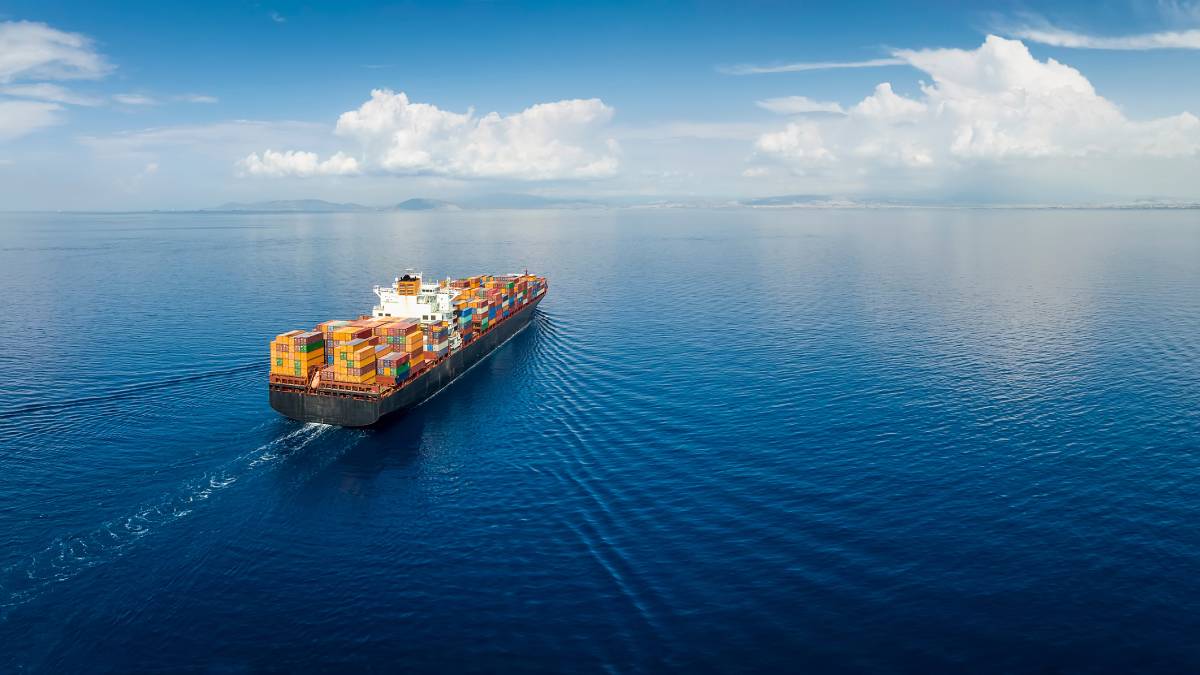
Constellations spoke with Pacôme Révillon, CEO of Novaspace (the merger of Euroconsult and SpaceTec Partners), about satellite connectivity in the evolving maritime market. Highlights of the discussion included the variety of pain points in providing continuous connectivity at sea, the role of Starlink in maritime connectivity standards and how this market will transform over the coming decade.
The Market for Connectivity at Sea
According to the United Nations Conference on Trade and Development, 80% of global trade volume is shipped by sea. International supply chains rely on maritime connectivity, and countries with low maritime access find it difficult to fully participate in the global economy. This opens a connectivity market for satellite that will be extremely important in the coming years.
“If you look at the global connectivity at sea… it’s a complex environment,” says Révillon. Expanding satellite connectivity at sea means dealing with “a variety of regulations and obligations” from passing through different waters, planning for emergencies, and preparing for maintenance and repair. Just like everybody else on earth, “you need more and more data.”
One of the unique complexities of the maritime market is that “you’re in a closed environment where you [have to] make sure you can have the connectivity you need when you need it along your journey,” says Révillon. Connectivity on a ship is constrained, especially in terms of the real bandwidth you have available to use. There is also the obstacle of installing the requisite physical hardware on board, with limited space and solutions available to build onto a ship.
Building satellite connectivity into these vessels would allow for various new capabilities, including distant monitoring for onboard maintenance, automated vessels with fewer crew members and even allowing the ship to operate as an extension of the company by “spending less time at the port and more time at sea so you can have your operations on the go,” says Révillon.
Starlink: A New Standard for Connectivity
“In the maritime domain, Starlink has already been transformative,” says Révillon. Market pressure within the maritime sector is pushing for more bandwidth availability, which will allow for better service onboard these vessels. Starlink also offers simplicity in deployment and use and a price reduction compared to traditional antennas. “The cost of the antenna being quite low compared to traditional pricing in the maritime sector, and the simplicity of installation have facilitated very much a scalable deployment of the solution,” says Révillon.
Looking forward, however, Révillon foresees opportunities for other satellite players to make a bid for a slice of the market: “if we look middle term, there are other constellation projects out there that will certainly look at competing with what Starlink is offering today.” Successfully competing with Starlink in the maritime market will depend on the ability of a satellite provider to offer ease of use and appropriate bandwidth to end users. And there is still plenty of room for competition; “many stakeholders and shipowners in the industry require a guarantee of a service working all the time,” says Révillon, and even Starlink “doesn’t have a license everywhere in the world.”
Révillon is curious to see how other satellite providers will find their competitive edge. “How some other players in the ecosystem will try to adapt, or if new constellations can challenge them within a few years, will certainly be an interesting development to follow.”
The Future of Maritime
Maritime is worth keeping an eye on, says Révillon, as “it’s already quite a transformative period in the industry.” Next steps include equipping ships for the next generation of satellite solutions and capabilities. “It’s progressing quickly, but there’s still thousands of vessels to equip around the world,” he says, and this transitional phase will likely take several years. Once the vessels have been properly equipped, the maritime industry will be integrated into the IoT and will demand significantly more bandwidth, and also produce significantly more data.
As with any other industry, “the point is you want those assets to be more efficient,” says Révillon. This transition to satellite connectivity will allow vessels to save on fuel and material, while also allowing for predictive maintenance and optimized operations. If operations can use these methods to optimize by just 5-10%, those savings taken to a fleet level will be massive.
To hear more about the role of regulatory bodies like the International Maritime Organization, sustainability objectives and SLAs in the maritime market, listen to the full episode here.
Explore More:
Dancing with a Colossus: Satellite Industry Fixated on Competition with SpaceX, Amazon
Podcast: Satellite Industry Shift, Demand Drivers and the $60 Billion Dollar Market Opportunity
Riding the Starlink-LEO Tiger to a New Business Model for Maritime Connectivity
How the Satellite Industry Can Adapt to Starlink’s Aggressive Price Points
